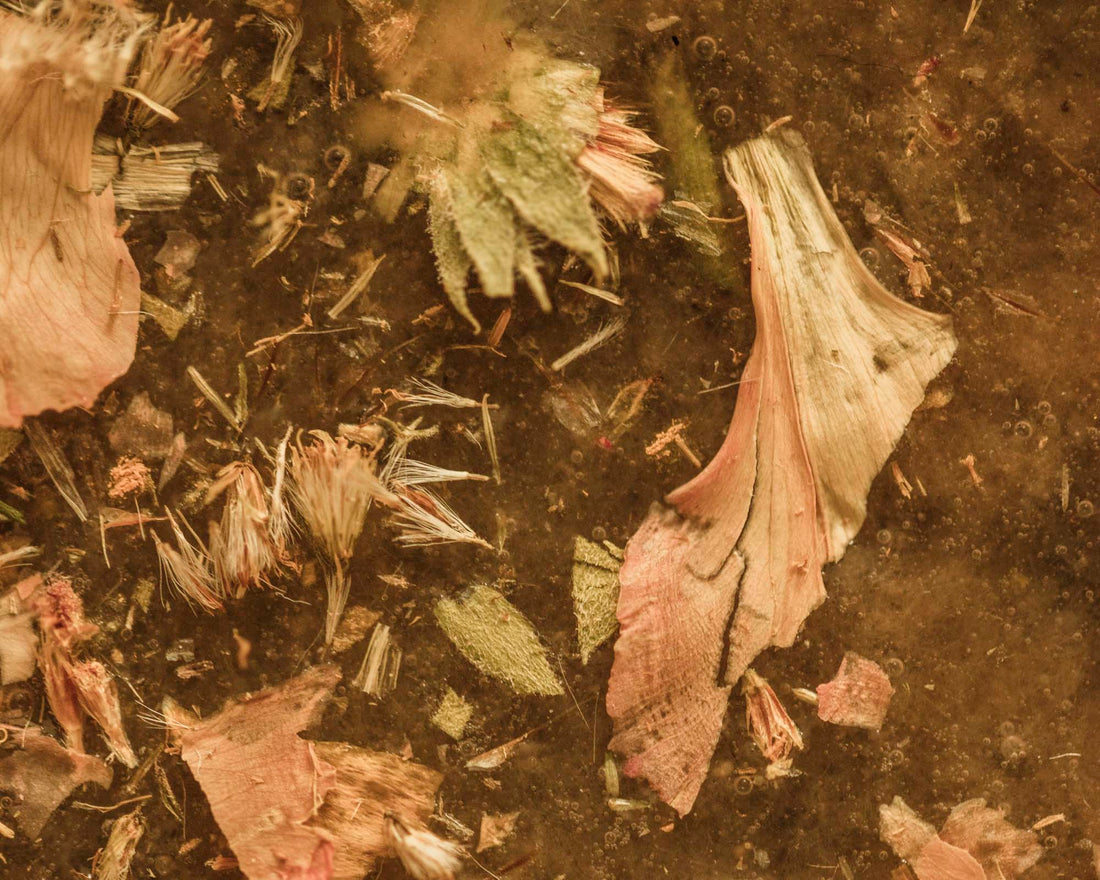
The Alchemy of Making | What Happens When We Make Things (and Why It Matters)
Share
THE HANDMADE HEALING: Why Making Stuff Changes Us.
There’s a kind of alchemy that happens when your hands are involved. It’s not just about creating a meal, a balm, a basket, a garden. It’s not just about the finished thing. It’s about the process — the ritual of doing, the slowness, the problem-solving, the quiet intimacy between your thoughts and your fingertips. When you make something with your hands, you’re not just forming the object — you’re reforming yourself.
Why? Because the hands are the translators of the inner world. When your hands are busy crafting something, your mind stops spinning in theory and starts organizing itself in practice. You’re not only witnessing form take shape — you’re embodying it. Your body and brain sync into presence. Into pattern. Into peace.
 You begin to: See progress in real time. Feel control where there was chaos. Meet resistance and move through it — literally.
You begin to: See progress in real time. Feel control where there was chaos. Meet resistance and move through it — literally.
✧ The Deep Psychology of Doing with Your Hands
From a neuroscience lens: The hands are densely packed with sensory nerves, and when we engage them intentionally, we activate large regions of the brain — including areas linked to memory, emotion, and reward. Doing with your hands lowers cortisol (stress) and increases dopamine (pleasure, motivation). Repetitive, rhythmic motion — like kneading, stitching, chopping, shaping — regulates the nervous system. This is primal. This is ancient.
 From an energetic or spiritual view: Making with your hands is ritual in motion. It is a direct channel between thought and form, a microcosmic mirror of manifestation. You want something. You envision it. You make it. And suddenly: it exists. That’s power. That’s prayer.
From an energetic or spiritual view: Making with your hands is ritual in motion. It is a direct channel between thought and form, a microcosmic mirror of manifestation. You want something. You envision it. You make it. And suddenly: it exists. That’s power. That’s prayer.
✧ Why It Changes You
Because your mind can’t lie when your hands are doing the work. You begin to: Prove to yourself that you can follow through. Watch something go from chaos to coherence. Witness effort become beauty. Experience what it feels like to be capable, not just in theory but in practice.
And there’s nothing more healing than seeing a finished creation and knowing: I made that. I did that. My hands turned an idea into a reality. Suddenly, the impossible becomes tangible. The stuckness moves. The psyche opens. You become the evidence.
✧ Whether It’s Food, Fabric, or Firewood…
Every time you make something, you’re also making something new in you. Chop the herbs = clarify your thoughts. Shape the clay = reshape your emotions. Fold the paper = fold the overwhelm into something delicate. Stir the pot = stir your energy into a new direction. This is the quiet therapy. The ancient medicine. The WYLDE truth.

Creating something—anything—with your own hands or mind does far more than produce a final product. It is a primal, alchemical act that reorganizes your nervous system, rewires your brain, reclaims your power, and re-tunes you to your essence. Here’s how:
1. Creation is Regulation
When you’re creating—cooking, crafting, drawing, writing, building, carving, braiding—you enter a state of focused presence. This presence invites your body into parasympathetic activation (aka, the “rest and digest” state). Heart rate slows. Breath deepens. Time softens. You become still inside, even when your hands are moving. This is nervous system healing in real time.
2. Creation is Coherence
When your hands and mind are working toward the same goal—especially in a tactile or visual way—your left brain (logic, structure) and right brain (intuition, creativity) sync up. This leads to neural coherence, meaning your brainwaves become smoother, more efficient, more regulated.
Coherence = clarity. That’s why solutions to unrelated problems show up when you’re making flower bundles or fixing a fence.
3. Creation is Confidence
When you complete a creative task, especially one that felt intimidating or foreign, your brain gets a dopamine hit—but not just from reward, also from self-trust. You’re proving to yourself:
I can make something out of nothing. I can follow through. I can birth what didn’t exist before.
This is neuroplastic proof that you’re capable, resilient, and resourceful. That spills over into relationships, work, self-talk, everything.
4. Creation is Integration
The body holds emotion and memory. When we move intentionally while creating—pressing clay, sanding wood, threading needles, kneading dough—we’re not just making art or food. We’re metabolizing experience. You might not know why you’re crying while sewing that dress. But you are transmuting something. This is somatic integration—processing through physical engagement rather than just thought.
5. Creation is Communion
When you create, you step into relationship—whether it’s with nature, materials, ancestors, memory, or mystery. It’s a form of prayer. A way of speaking to the world without words. Every act of creation says: I’m alive. I’m here. I’m in dialogue with the beauty and chaos of being human.
6. Creation is a Mirror
How you create tells you everything about how you live. Do you rush? Do you pause? Do you agonize over every detail? Do you scrap it if it isn’t perfect? Do you improvise with what you have? Do you enjoy the process or fixate on the outcome? Making something—anything—is the fastest way to see your patterns… and rewire them gently, through action.
7. Creation is Resistance
In a world that commodifies your attention, your energy, and your identity, choosing to make something just because is radical. You’re opting into slowness. Intention. Reverence. You’re saying, I don’t exist just to consume. I exist to create. And that’s a power no system can take from you.


